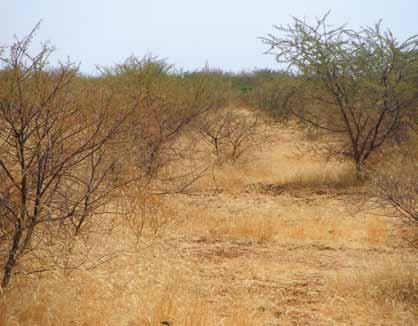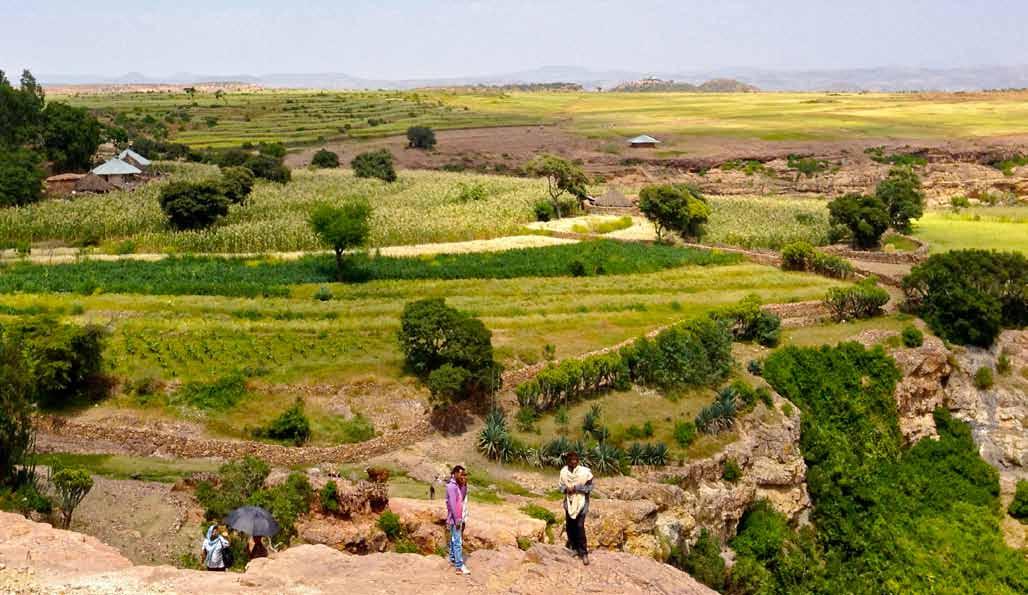
2 minute read
food Security and Land Degradation
from Land for Life
By unCCD
Komila Nabiyeva, United Nations Convention to Combat Desertification
Advertisement
Food production has a profound impact on our environment. Globally, agriculture consumes 70 percent of all freshwater for irrigation. It drives 80 percent of deforestation and is the source of 30 percent of all greenhouse gas emissions. Yet, food production is unavoidable because food is a basic need for all of us. To make things worse, unsustainable land and water management exacerbate land degradation and biodiversity loss.
The Food and Agriculture Organization (FAO) of the United Nations projects that by 2030, the growing global population will increase the demand for food by 50 percent. To meet this demand, an additional 120 million hectares of new, productive land will be needed. This is a new farm the size of South Africa. At the same time, the amount of productive land available for food production globally is falling, largely due to urban development and other human activities that degrade an already limited natural resource. Humanity will never meet the global food demand unless the current trend of land degradation is curbed.
Globally, 43 percent of rangelands and 20 percent of croplands are already degraded, according to FAO. And the annual loss of 12 million hectares of productive land to desertification and drought is an opportunity lost to produce 20 million tons of grain. Human action and chemical processes are the main causes of land degradation in all ecosystems, with overgrazing, inappropriate farming practices, and agropastoral land uses as the lead drivers. Missing or misguided policies often make the situation worse. Scientists estimate that soil erosion alone is costing the international community up to US$490 billion per year.
For a long time, it was assumed that because food production was a necessary evil, the associated environmental degradation should be tolerated. But researchers are now finding that food production need not be synonymous with environmental degradation. The case studies presented here back that evidence and expose other myths associated with food production and the drylands. Innovations from the Biovision Foundation show that fertilizer-free and herbicide-free food production systems are possible without compromising production levels. Mechanical technologies, like those invented by the late Italian scientist Venanzio Vallerani, that are built on traditional knowledge and systems can transform the land situations in most drylands. And with the use of “underground forests” and EcoAgriculture, Niger and Kenya can give new life to tired land and soil.
The moral obligation to feed the growing population and to eliminate chronic hunger and poverty is not in question. But the research advances to date mean that meeting this demand at the expense of the environment is irresponsible. What is lacking is the shift of policy makers from food production to sustainable food production, where new land degradation is • Chronic hunger affects over 900 million people worldwide
• By 2030, the demand for food is expected to increase by 50 percent
• By 2030, we may need 120 million hectares of new land to meet food demand
• 12 million hectares of land are lost due to land degradation every year
• Land degradation costs the global community at least US$490 billion per year
avoided, sustainable land use is rewarded, and the restoration of degraded land becomes an investment.
The Green Revolution was the legacy of the 20th century. The aspiration of a land-degradation neutral world, which was articulated by all world leaders at the United Nations Conference on Sustainable Development (Rio+20), must be the legacy of the 21st century agriculture.











